Your kit is tuned up, you’ve got it sounding great, full, and resonant with every drum that you hit. But when you hit record in your digital audio workstation, (DAW) your toms sound thin, brittle, and not at all like the fat tones you’re hearing behind the kit! Today we’ll look at the solution to thin-sounding tom recordings with a few simple techniques that will elevate your game in the studio.
Microphone Placement and How!
For the following miking techniques, we’re assuming you’re close-miking each tom on the kit. Obviously, if you’re just using overheads, the Wurst method, or another technique that disregards close tom mics, then this information won’t pertain to you.
Related: Want the Cheat Code for Fat-Sounding Toms?
We’ll take a look at the tom tuning cheat code that you’ll want in your repertoire for your next session to achieve fat, resonant-sounding toms! | Read »
Today we’ll be close-miking each tom on the DW Design Series maple kit with a Beyerdynamic TG-D35 dynamic microphone. These compact mics offer a supercardioid polar pattern that’s perfect for what we’re trying to accomplish today: A focused, full tom tone without getting in the way of the drummer or coloring the sound too much. Each TG-D35 comes complete with a Beyerdynamic drum clamp mount that is spring-loaded and features rubber pads to help to separate any drum vibration from reaching what you’re capturing with the mic.
For the rack tom we’re allowing the TG-D35 to point between the edge of the drum just off the hoop/ and the dead center of the drum where the drummer most often hits. This location of the drum produces a slightly increased tension tightness from dead center, but still features a fantastic amount of low-end response when hit. And because we’re capturing near the edge, those sweet, sweet overtones can be captured as well for sculpting later in the mix stage.
Another option for the rack tom mic selection would be using something like the Sennheiser MD 421 and floating it slightly above the rack tom for capturing all the resonance and tone you can from the top of the drum. Additionally, because these aren’t tethered to the drum you can adjust mic stand height to find a distance and tone that works for your mix.
The floor tom is going to be driving our groove today, so it’s imperative to capture all the nuances of this 16” maple beast from DW. With that in mind, we’ll also be using a Beyerdynamic TG-D35 with the capsule aimed more towards the center of the drum where most of the low-end resonance is coming from. This is also where the drummer will be striking the most, and capturing that stick articulation during the groove is an added bonus that brings a real human aspect to this drum track.
Add Resonance by Capturing it and Creating Punch with Gates!
Now that we’ve got our toms miked on top, w’’re going to add more resonance in the most natural way possible: by miking the resonant tom heads. We wanted more low frequencies from our rack tom, so we’re going with an Electro-Voice RE320 dynamic microphone and mirroring the batter head mic placement on the reso-head side with its kick drum curve on (this captures frequencies as low as 30Hz.) And on the floor tom, we’re using the same mic as we did on its batter head: a Beyerdynamic TG-D35. This one is pointing near the center of the drum reso head.
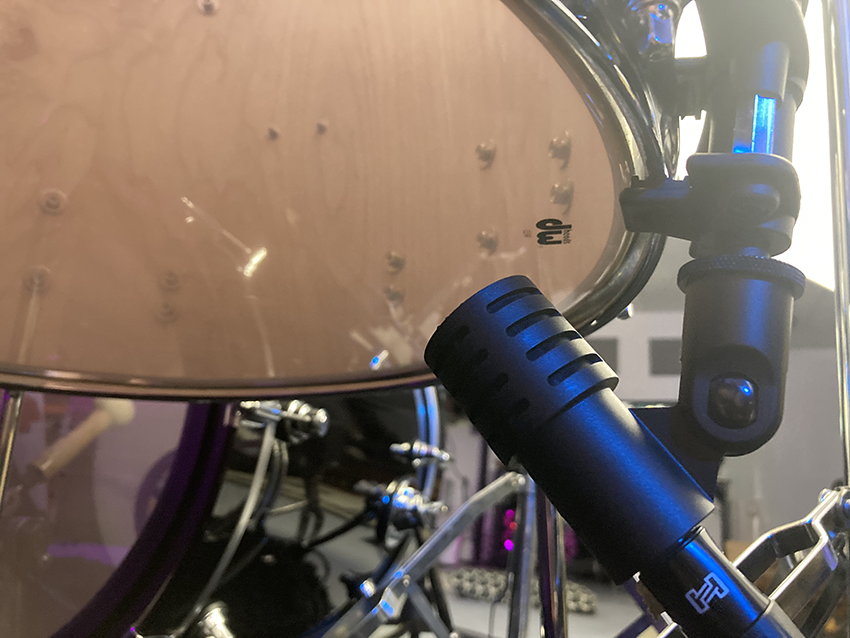
As you can hear with the resonant mics only, it’s supplying the mix with a ton of useful frequencies that we just couldn’t capture with batter head mics alone. These resonant mics create the “air” around our tom hits that make for that classic studio tom drum sound.
Along with the incredible addition of resonant tom mics, we’ll be creating punch by taking something away. We’ll be using a noise gate on our rack tom tracks. A noise gate is an audio processor, either within your DAW or as a dedicated piece of outboard gear that controls the volume of a signal based upon the threshold that you’ve set. In this instance, we’ve set the threshold high enough for the rack tom hits to come through, but once the hit resonance tails off, the gate slams shut and we’re left with a quiet track.
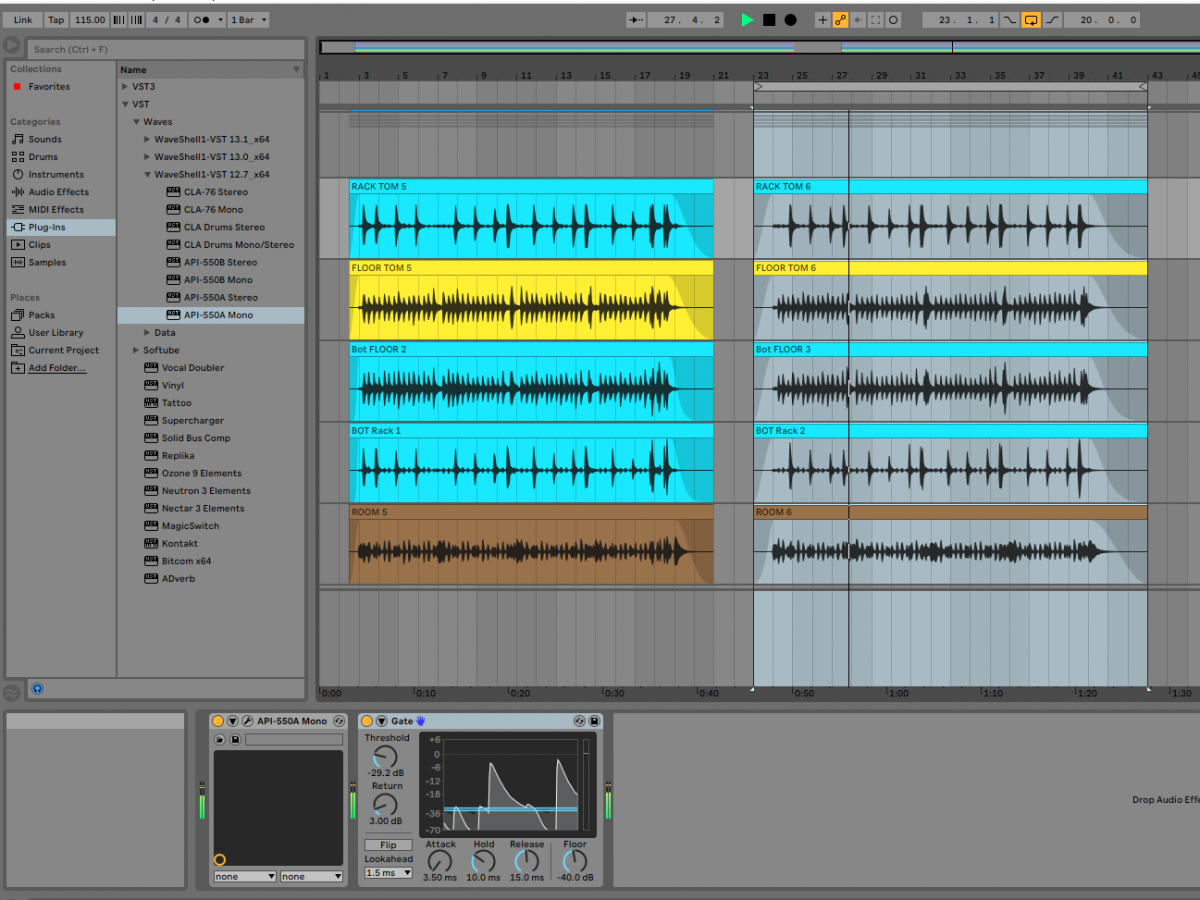
Because we aren’t having to deal with any of the noise or mic bleed around the rack tom hit, this translates to a punchier tone when the tom is hit. In the simplest terms, we’re adding punch, by subtracting the noise present around each rack tom hit.
We’re omitting a gate from the floor tom track as it’s a driving groove that relies heavily on a noise floor around our beat. We don’t want to lose that by adding a gate to the track.
Final Mix Tweaks and Bonus Hints
Now that we’ve got our toms miked and a reliable DAW mix setup created, we can move on to any last minute tweaks to our mix that’ll help the groove jump out of your headphones and come alive. The first is tom drum panning within your DAW. This topic is widely debated, and we’re here to tell you that there isn’t one perfect solution. Sure, there are universal truths like having your kick centered, but for toms you’ve got options. For our example today we wanted a wide kit sound. Our overhead mics are hard-panned left and right, and so there’s already a good amount of space in the mix. We have one rack tom and one floor tom, so we’re not dealing with a Terry Bozzio amount of panned toms to deal with.
For this instance we went with a little more than halfway to hard-panned on each side. So for Ableton, that has fully left and fully right panned being -50 and 50 respectfully, we’ve gone with -30 and 30 for our rack and floor toms. This makes for a kit sound similar to that of what the drummer is hearing behind the kit (as a right-handed drummer.) Rack tom on the left, floor tom on the right.
Now if you have an additional input left on your interface or mixer, we highly suggest adding a room mic. For our application in-studio today we’re using the Beyerdynamic TG-D71 condenser boundary microphone, which we’ve placed on the hard floor some 10-plus feet away from our bass drum.
Our room track adds all the high-end sparkle to the mix with a bit of sharp attack added to each snare and tom hit. When you put everything together, it elevates our mix to a place that will fit nicely with guitars, bass, keys, and vocals while remaining fat and driving.

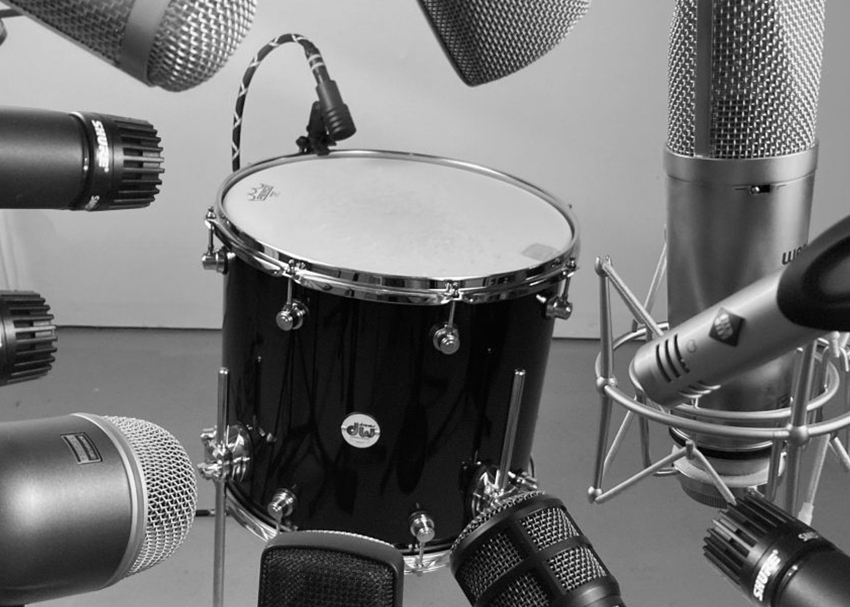
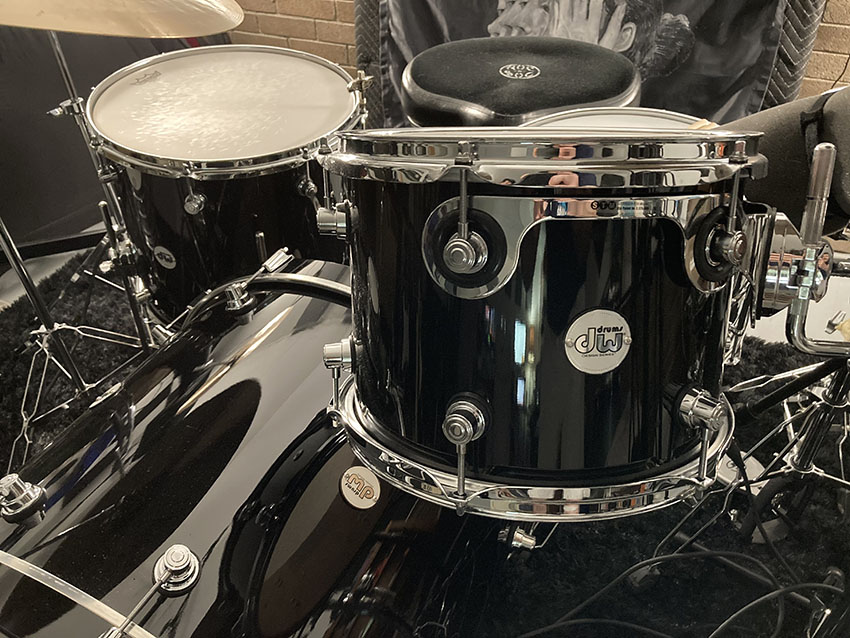
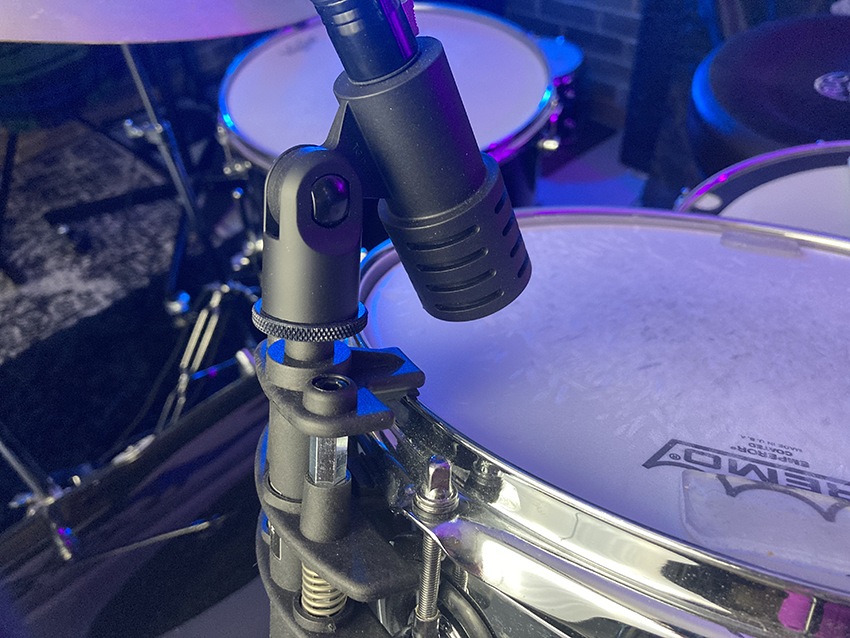
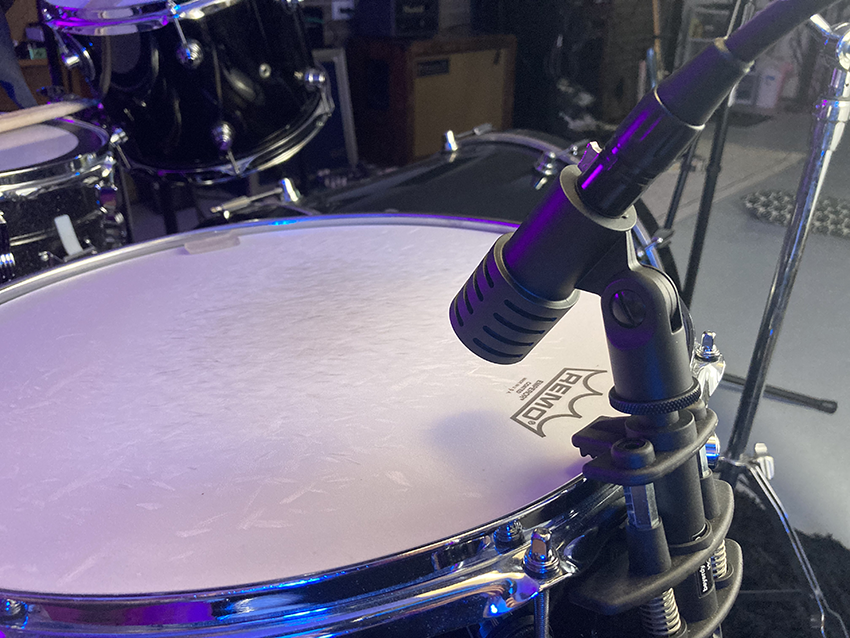
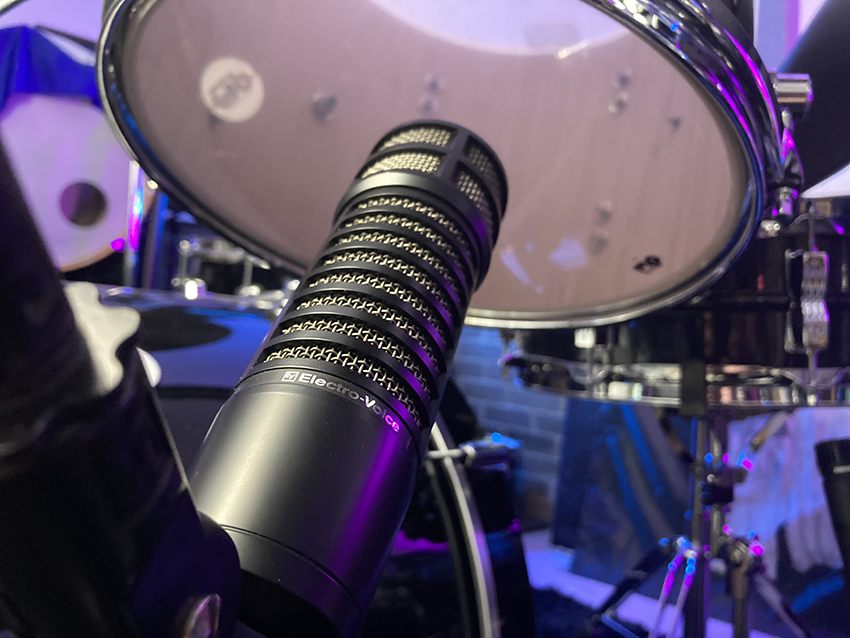


Leave a Reply